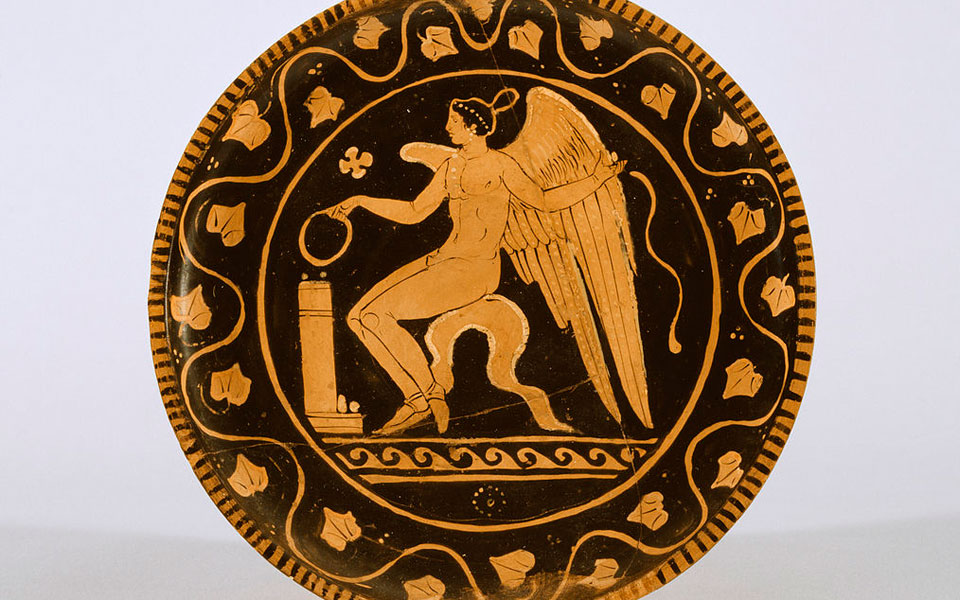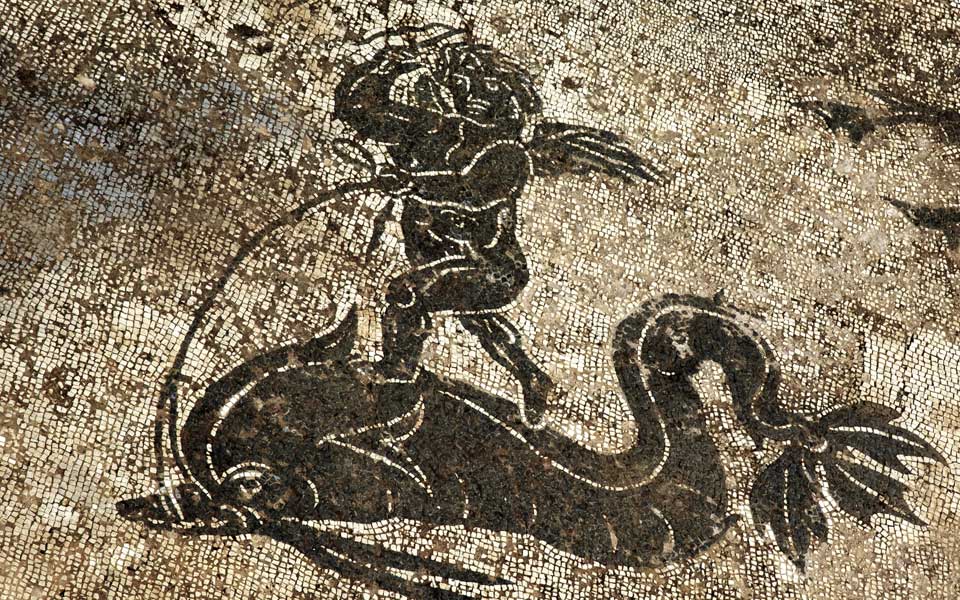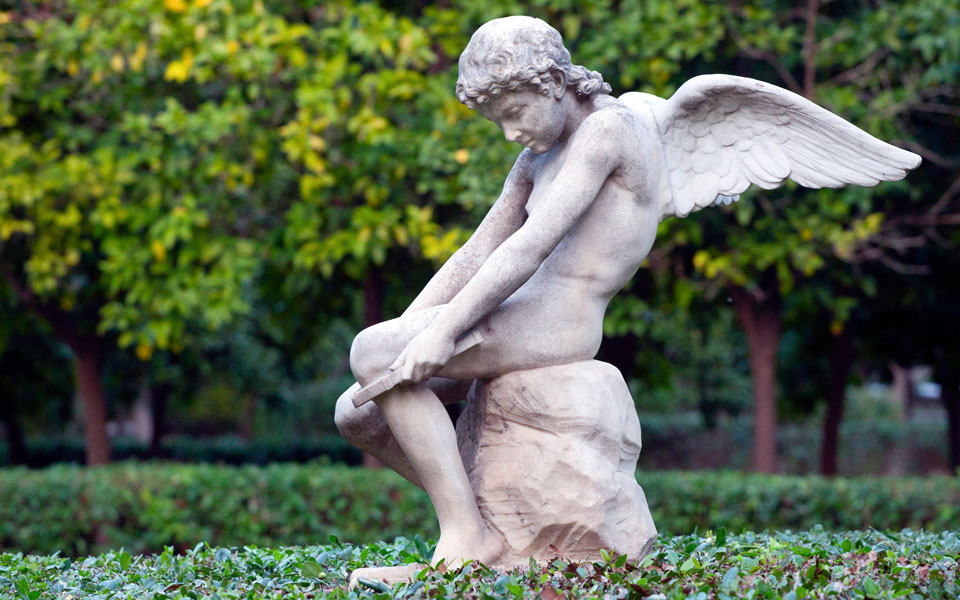Eros – from the ancient Greek ἔρως – meaning “love” or “desire” (in a sexual or passionate way).
In Classical Greek mythology, the god of love and sex, Eros, was the love child of Aphrodite, goddess of love, beauty, passion and procreation, and Ares, the infamous god of war. Eros was one of the Erotes, or “Aphrodite’s retinue”, a group of winged gods associated with love and sexual desire, often depicted as youthful, mischievous nudes.
Different Erotes represented various aspects or facets of love or desire. For example, Anteros (Ἀντέρως) was the god of mutual love or “returned love”, Himeros (Ἵμερος) the god of unrequited love and Pothos (Πόθος) the god of “yearning” or “longing”. There was also the mysterious Hedylogos (Ἡδυλογος), represented in Greek art as the god of “sweet-talk”.

© By Ascoli Satriano Painter - Walters Art Museum (Public Domain) https://commons.wikimedia.org/w/index.php?curid=18791389
In ancient art, Eros is often seen carrying a bow and arrow, firing his darts (“love’s arrows”) at unsuspecting mortals. He is also seen playing a small lyre or flute, serenading young lovers, and accompanied by bouquets of roses, the ancient Greek symbol of secrecy and virginity.
In the famous Argonautica, a 3rd century BC epic poem by Apollonios of Rhodes about the legend of Jason and the Argonauts, the goddesses Hera and Athena conspire to ask Aphrodite to tell her son, Eros, to “loose an arrow” at Medea to make her fall in love with Jason.
His Roman equivalent was, of course, Cupid, who embodied passionate desire, but also become a symbol of power and victory. The Roman general Sulla (138–78 BC), in his rise to power following the civil wars, issued coins depicting Cupid carrying a palm branch, the symbol of triumph and peace. In Roman art, notably on sarcophagi, Cupid was often depicted riding a dolphin, representing the human soul on its journey to the afterlife.

© Shutterstock
When it comes to eros as a word, it is worth noting that it refers only to a specific type of love. Indeed, the ancient Greeks had no fewer than six terms to describe love.
Besides eros, these included: storge (στοργή), meaning familial love; agape (ἀγάπη) for brotherly love; philautia (φιλαυτία), literally “self-love”; and xenia (ξενία) for “guest-friendship”, rooted in the sacred ritual of hospitality and later adapted to mean “love of foreigners”; and philia (φιλία) for affection or friendship, usually between equals.
The ancient Spartans, feared warriors, would offer sacrifices to the god Eros before going to war, believing that victory depended on their close bonds of friendship, standing shoulder-to-shoulder in the line of battle.
Scholars have suggested that eros, derived from the ancient Greek verb eramai (ἔραμαι, “to love”), could have proto-Indo-European, thus pre-Greek roots. Whatever its origins, the concept of eros, which lends itself to the terms erotic and erogenous, is a powerful theme in ancient Greek literature and philosophy.
In later European psychology, notably Freudian thought in the late 19th and early 20th centuries, eros became associated with the desire to live and to create life.











